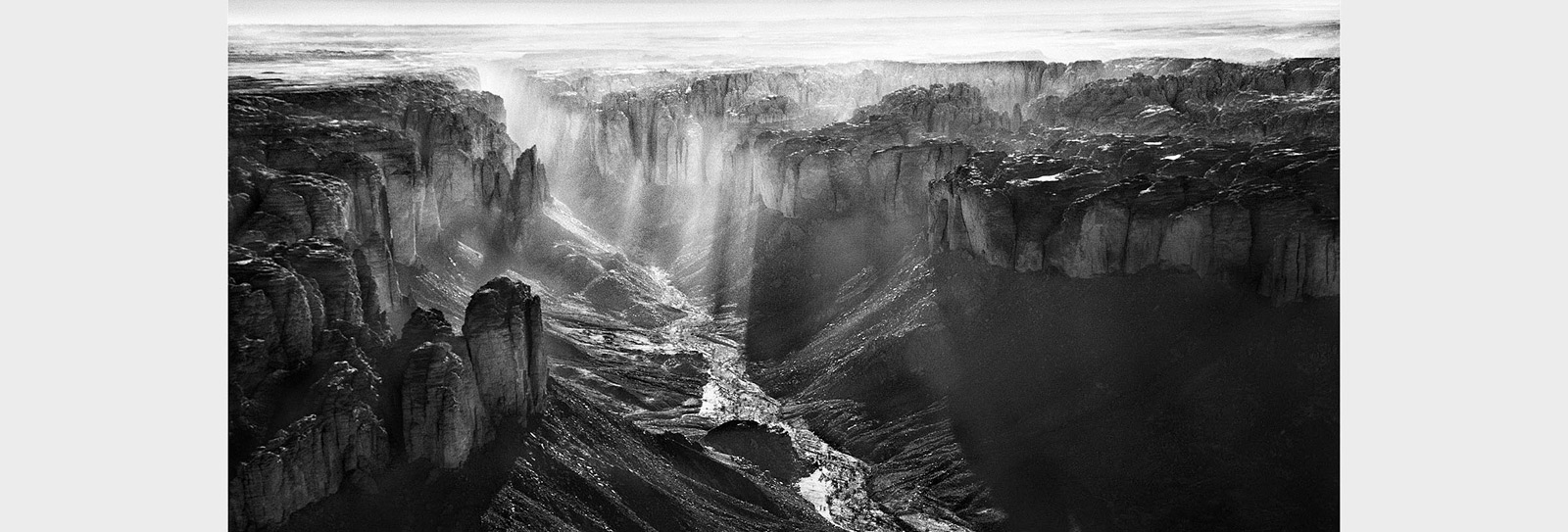
FirstLook: Tassili n’Ajjer National Park
- Arts
- Photography
Photograph by Sebastião Salgado / Contact Press Images
At first impression, the Sahara appears to be lifeless, with golden sand dunes stretching out as far as the eye can see. Yet it is one of the places where I have felt closest to the past of humanity.
We were fortunate during this part of a journey in southeast Algeria to have a helicopter made available by the Algerian army for some 12 hours over Tassili n’Ajjer National Park, a UNESCO World Heritage Site of outstanding scenic, historical and geological interest. It has one of the largest and best-preserved groupings of prehistoric cave art in the world, more than 15,000 drawings and engravings that record climatic changes, animal migrations and the evolution of human life on the edge of the Sahara from 8,000 to about 1,500 years ago. It is also, in parts, an island of life that harbors the endemic Saharan cypress, one of the rarest trees in the world.
From on high, it was possible to see how this vast plateau ends abruptly in what resembles a cliff face that in turn is slowly being eaten away by erosion. As compacted sand disintegrates, it adds to the desert. In other areas, deep ravines have been cut through the plateau by rivers that flowed thousands of years ago.
—Sebastião Salgado
You may also be interested in...

FirstLook: A ‘blistering triumph’ for the ‘back-street boys’
Arts
Amid the roar of racers zooming toward the finish line in London during the 1980 Grand Prix, longtime auto-racing photographer and renowned artist Michael Turner trained his lens on a Saudia-Williams FW 07.
FirstLook: Zillij in Fez
Arts
In patterns and refractions, the old city of Fez, Morocco, comes to life through the geometric tile works known as zillij. In 2001, AramcoWorld commissioned photographer Peter Sanders to tell the story of a family who for five generations has added new dimensions to art and architecture.
FirstLook: Soaring off Ambon Island
Arts
This photo was taken off Ambon Island, East Indonesia in 2010. It is one of my favorites, illustrating the free-spirited nature of the children in the rural archipelago. While some children in the big cities may stay inside and play computer games, the children in Ambon with easy access to the water see the ocean surrounding their village as their playground.